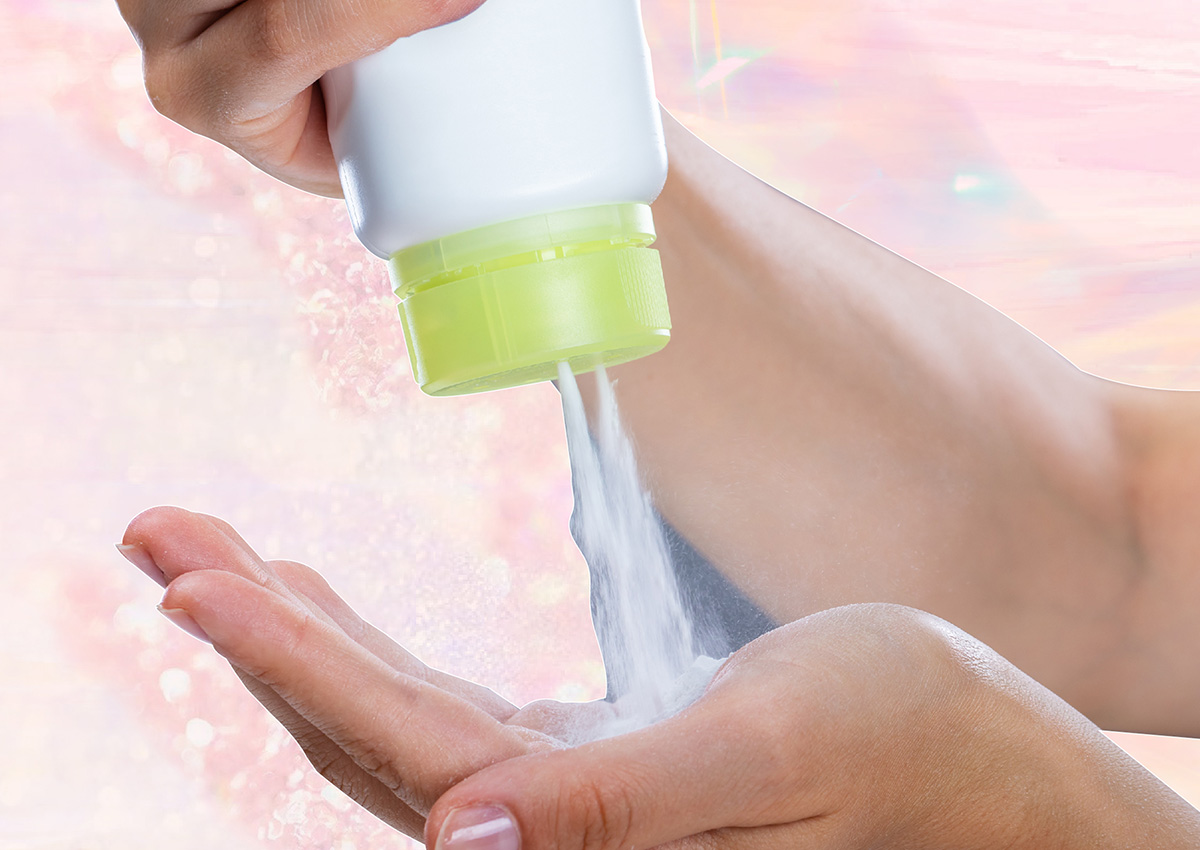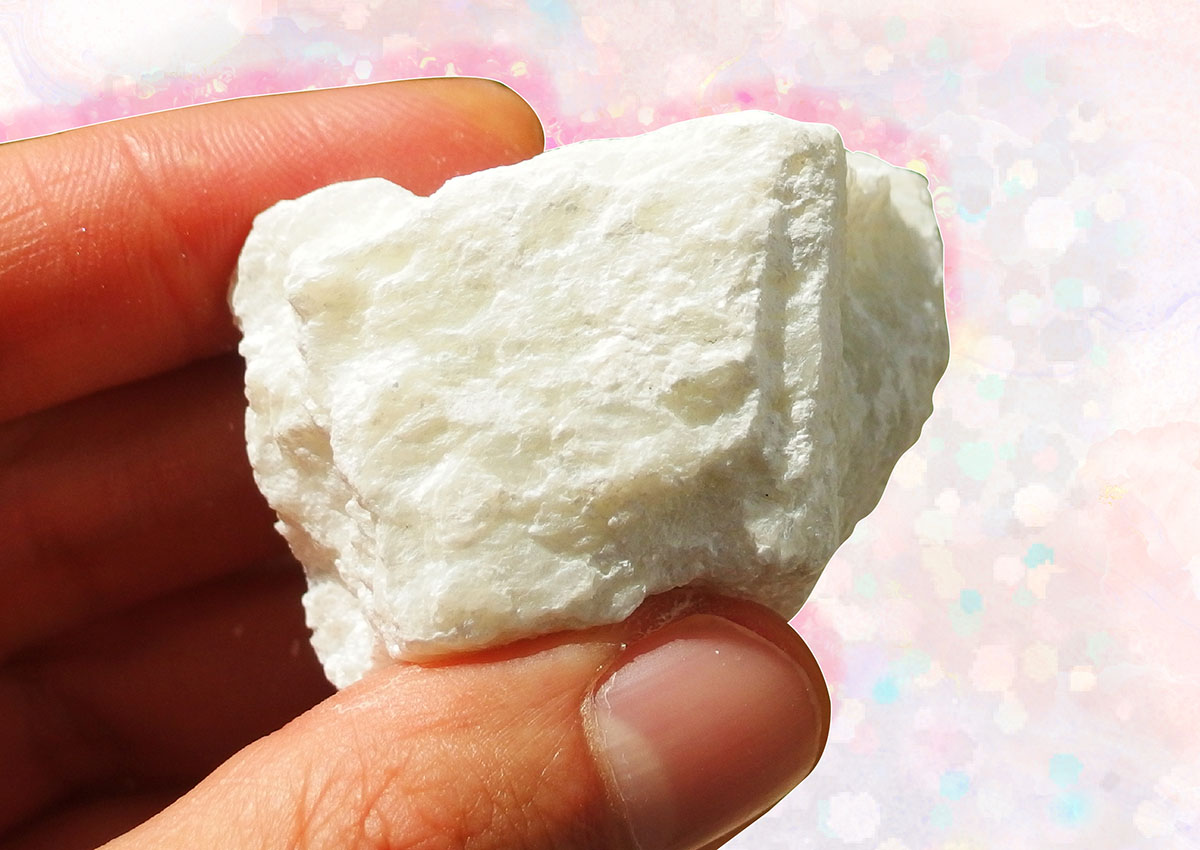Let's Talk About Talc Powder: What Derms Want You To Know

There are a handful of cosmetic ingredients out there that’ve unfairly earned a bad rap. Mineral oil and petroleum jelly – often-recommended dermatologist faves – are two examples, and talc is another. Short for “talcum powder,” talc is a naturally occurring mineral that’s added to all sorts of personal care products ranging from pressed finishing powders to bronzers to foundation.
Ahead, we’re exploring what talc is, how this ingredient garnered some notoriety, and we’ll be outlining some scientific evidence that has come to light since controversy encircled the ingredient, and what this means for you.
What is Talc?
Talc is one of the softest natural minerals in the world (made up of magnesium, silicon, oxygen, and hydrogen) and is known for its softening, soothing, oil-absorbing, and anti-chafing properties. All the above makes it highly desirable in the skincare and beauty realm, and as such, you’ll find it in many products.

“Talc in its natural form comes from underground deposits all around the world, and talc-based face powders are commonly applied on top of cream-based foundations to prime the face so the product better stays in place,” explains Dr. Beth Goldstein, president of Central Dermatology in Chapel Hill, North Carolina. “This also helps the skin look naturally dry, rather than oily and shiny.”
Some additional benefits of talc are that it reduces a cakey appearance, can blur the look of pores, and reduces makeup creasing.
Why Does Talc Have a Bad Reputation?
@javonford16 Reply to @__deedee__4 #cosmeticchemist #notsopretty #talc #makeup ♬ original sound – Javon Ford
With all those accolades, we’re sure you’re wondering what happened to cause talc to fall from grace. Dr. Goldstein says, “While talc has numerous cosmetic benefits, it is important to discuss recent controversy surrounding talc-containing products.”
Long story short: People became concerned about the presence of asbestos in talc powder. Asbestos is another silicate material that looks similar to talc, but unlike talc, it is carcinogenic; meaning it has the potential to cause cancer. Speculation surfaced about asbestos contaminating talc powder during the mining process. Because the two look so similar, the thought was that it went undetected to the naked eye.
Perhaps the most notable example is Johnson & Johnson’s Baby Powder, where talc was the only ingredient alongside fragrance. After concern, outcry, and litigation, the product has since been pulled from shelves and remains discontinued. Some believed that the product contained as much as 1% asbestos. This was a lower number than the concentration allowed at that for industrial workers, but rightfully concerning nonetheless.
Science for the Win
Since then, more scrutiny has been placed on the way talc is mined and the quantities in which it’s found in cosmetics. Dr. Goldstein tells us that numerous epidemiological studies have also been conducted to look at the potential association between talc and certain cancers, including ovarian cancer, uterine cancer, and mesothelioma.
“The good news is that scientific studies have not conclusively found a causal relationship between talc content and the aforementioned cancers,” she says. “To sum up the evidence, talc-containing products are not conclusively linked to cancer.”
Alongside independent scientific research, the U.S. Food and Drug Administration (FDA) conducts its own ongoing research surrounding talc in cosmetics. It even tests specific products formulated with talc on a regular basis to determine whether there’s any presence of asbestos. The most recent round of testing from 2021 detected no sign of asbestos in any of the 50 products it examined, from Benefit and Clinique to ABH and Maybelline (many of which we’re sure you’re familiar with!)
Another important factor to keep in mind is that talc is often found in very low concentrations in the majority of cosmetics. They are formulated with just enough of the ingredient to improve the quality and deliver the desired benefits mentioned above. Further, the talc used in cosmetics is also known as Pharmaceutical grade talc and it is distinctly different from industrial talc; the latter is mined totally separately. Cosmetic talc is mined from the highest quality talc seams known for their purity, which is then repeatedly checked before it can be considered cosmetic grade.
The Bottom Line on Talc
Because we have a greater scientific understanding around talc (and increased certainty that upholds mining standards), you can hopefully feel better knowing that using this ingredient doesn’t increase your risk of developing cancer.
However, we do understand that some people may feel hesitant about using products that aren’t talc-free. If that’s the case, you can absolutely seek out formulations that don’t contain the ingredient – there are many options on the market. A common alternative to talc is cornstarch, which isn’t quite as soft and silky but has similar properties. Other alternatives include tapioca starch, rice starch, kaolin clay, and arrowroot starch.
Now that you’re up to speed on talc powder, take a second to familiarize yourself with mineral oil, another ingredient that gets some undeserved shade.























Leave a comment